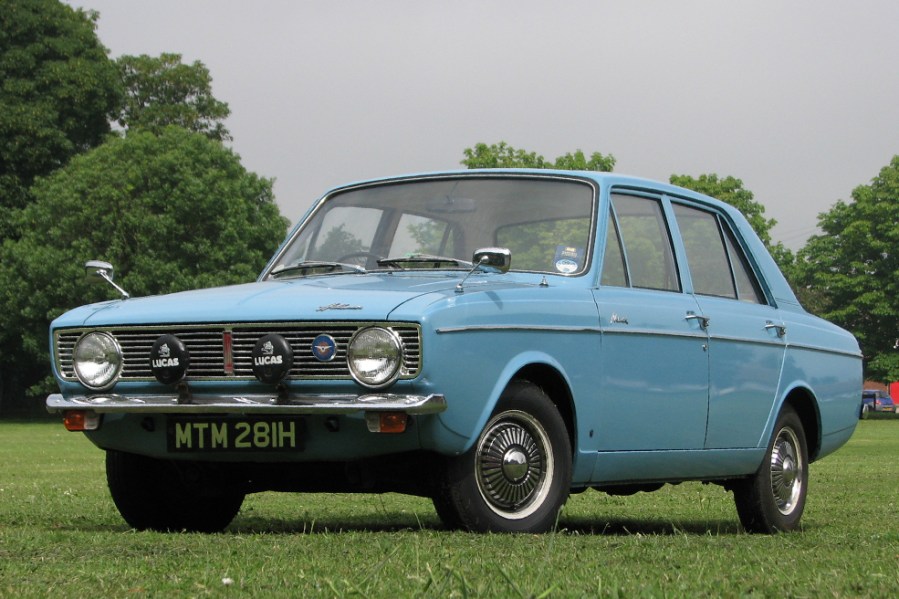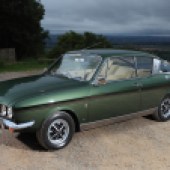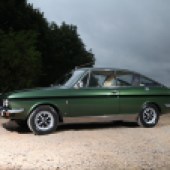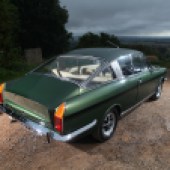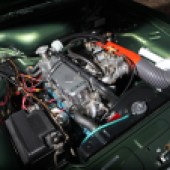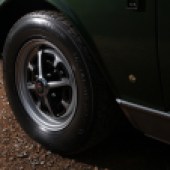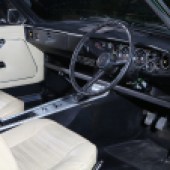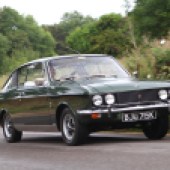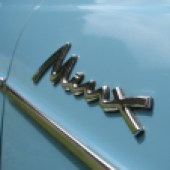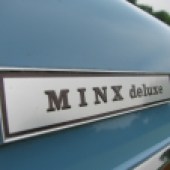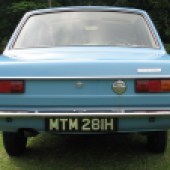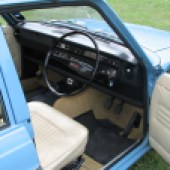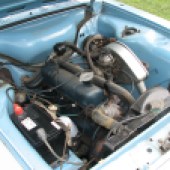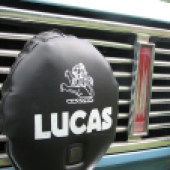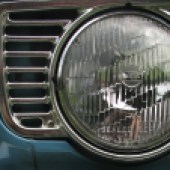The Rootes Arrow-series cars offered affordability and durability when new, and can still make a sturdy classic purchase today
Words: Richard Gooding
Faced with a new family car colossus in Ford’s new Cortina, the Rootes Group didn’t waste any time in developing a competitor. The Arrow family made its bow in 1966 – a year before Chrysler gained its controlling stake in the company – and was intended to be a cut above the Ford. Thanks to a much larger range of diverse badge-enginered stablemates, it could also be pitched against a more diverse array of rivals.
A decent range of options was needed because the Arrow would be replacing both the Audax range of cars comprising the Hillman Minx, Singer Gazelle and Sunbeam Rapier, but also the slightly larger Hillman Super Minx, Singer Vogue and Humber Sceptre. The Hillman Hunter and Singer Vogue were the first new models, being launched in October 1966. In January 1967 the 1496cc Minx model joined the range as an entry point, along with a 1500 version of the Singer Vogue that became the new Singer Gazelle.
Estate car versions of all four arrived in April ’67, and that same year saw the range-topping Humber Sceptre MkIII launched – though no estate version until 1974. Arguably even more notable was the ’67 launch of the Sunbeam Rapier fastback coupe, powered by a twin-carb 1725cc engine producing 88bhp. From 1968 there was also the higher-performance H120 Rapier featuring a Holbay-tuned 105bhp motor, and the following year a more basic coupe badged as the Alpine arrived, with the standard 1725cc saloon mechanicals and no vinyl trim on its rear pillars.
The rarest Arrow of all, the Hillman GT, was launched in 1969 and was based closely on the Hunter that won the 1968 London to Sydney Marathon. The Hillman Hunter GT, which replaced it from August 1970, was packaged a little more softly.
In October 1970, the Singer brand was dropped – some of the final Vogues were badged as Sunbeams – along with the Minx. All apart from the fastbacks and the Humber Sceptre became Hunters, with the range comprising DeLuxe, Super, GL and GT. A facelift took place in 1972, and at the same time, a new range-topping GLS model was introduced with the same Holbay engine as the Rapier H120.
Mainstream production ended in 1976. However, a reduced range remained available until 1979, built in Santry, Ireland, from CKD kits. The Arrow was also assembled in exotic locations such as Australia, Malaysia, New Zealand, South Africa and the Philippines, with the Hillman Hunter living on in Iran as the Iran Khodro Paykan until as late as 2005.
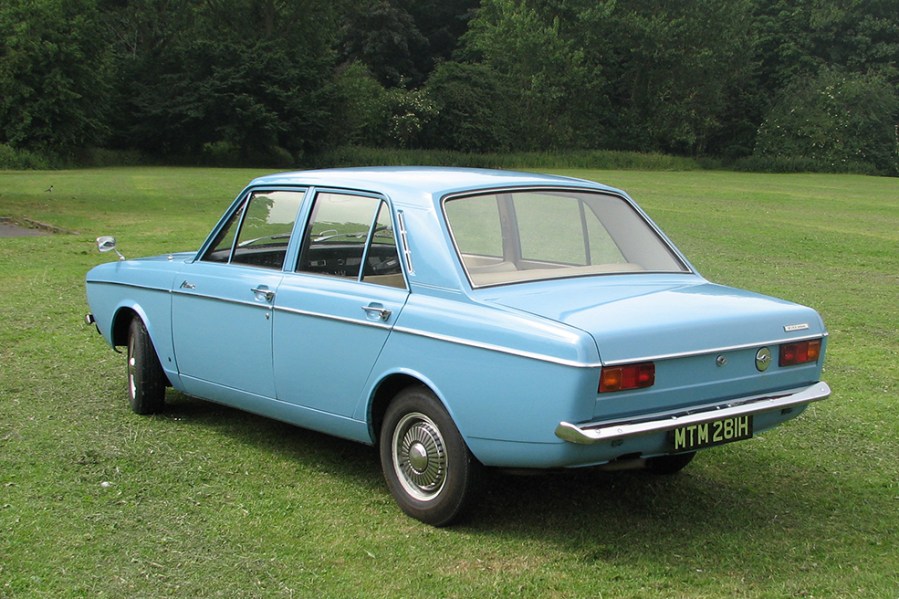
Bodywork
“Generally, they rust everywhere,” says Paul Marshall, who runs Rootes specialist Arrow5 (arrow5.co.uk). It’s all the usual suspects; sills (inner and outer), front floorpans, rear chassis legs over the back axle and around the rear spring mounts. Front wings rot in the usual places too, and the rear wheelarches, door bottoms and rear wing lower edges also succumb, along with the boot floor – usually due to a leaking rear screen rubber.
Look too at the front panel, especially around the front wing joins and underneath the front bumper. MacPherson strut ‘top plate’ rot, though not unknown now, is less prevalent here than on contemporary Fords. However, the rear shock absorber mounts at the top of the rear wheelarch do often rot out; look inside the boot. The earlier cars from around 1969-1974 fare better and Marshall reports that later cars are worse for corrosion. Check jacking points on all, though, with those on post-1973 cars being in the sills themselves.
Wings, rear valances and pattern sills can be sourced from Iran, thanks to the Paykan’s popularity. Original floorpans are generally no longer available, a few enterprising restoration specialists have imported them from Iran. “There hasn’t been a great spares back-up for them panel-wise, because they’ve never been worth that much money,” says Marshall. Secondhand panels are generally available through auction sites like eBay and specialists such as Arrow5 or owners who hoard spares due to their original unavailability. New old stock items can sometimes be found on auction sites too.

Engine and transmission
The mechanicals are made of sterner stuff. Powered by four-cylinder 54–61bhp 1496cc and 72–105bhp 1725cc engines, they should present little issue if they’ve been looked after. “They’re still an older engine design,” says Marshall, “and they will still wear out depending on how they’ve been treated.”
A rumbling bottom end on the move points to the main bearings about to let go. If an engine does need a rebuild, there are specialists who can do it from either new or secondhand parts. All engines had cast-iron blocks with either cast-iron or alloy heads. The latter is not inherently unreliable but does need normal cooling system maintenance such as use of good anti-freeze all year round. Watch out for signs of head gasket leaks, previous overheating or, just as importantly, an engine that seems to run cooler than it should; the thermostat may have been removed to mask an overheating fault. Also look out for oil leaks and leaking fuel pipes as they join the carb(s).
Rootes cars made in this period had an odd paint treatment inside the petrol tanks which tends to flake away with age, leading to fuel system blockages. If the system contains black bits, then chances are the tank needs flushing out.
The Holbay engine in the Rapier H120 and Hunter GLS boasted an upgraded camshaft, an uprated cylinder head (now very scarce) and twin Weber 40 DCOE carbs. A formidable racer in its day, the Hunter GLS scored many 1973 Production Saloon Car Championship class B wins in the hands of works driver Bernard Unett, but now there are only around 40 GLSs on the road.
When it comes to mechanical components, many parts are readily available at reasonable prices from specialists such as Speedy Spares (speedyspares.co.uk) and Macs Factors (macsfactors.co.uk), which also stock general service parts.
Four-speed manual gearboxes are most common, and should have a lovely change. Overdrive – if fitted and working – is also a definite plus. Borg-Warner autos – in three-speed and then four-speed from 1973 – were also available.
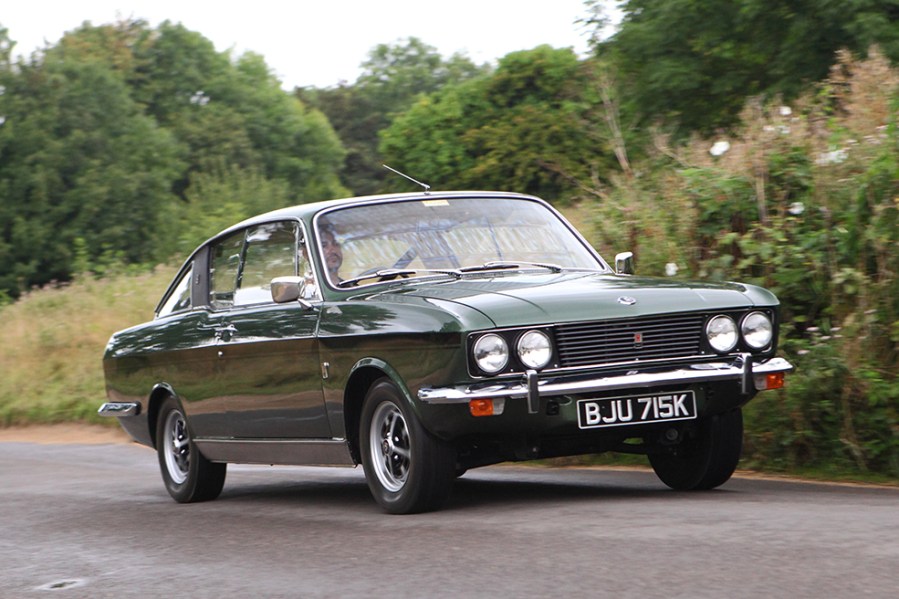
Suspension, steering and brakes
MacPherson strut front suspension made its Rootes’ debut with the Arrow family, while a live axle and leaf springs did the job at the rear. Track rod ends fail on a regular basis, largely because of the design, but at around £15 each, they aren’t expensive to replace. It’s a similar story for other suspension parts. Items such as ball joints, and bushes (£2.50–20.00) are all available at prices that won’t break the bank.
Items such as rear springs – which can sag – are harder to find, though, but some firms are making them from new. A steady supply of secondhand parts also means you may be able to find what you’re after, but obviously the replacements could be worn too.
Interior, trim and electrics
Look for the best interior you can, as getting a worn one retrimmed is expensive and original parts are very scarce – velour trim is particularly elusive. Also check for cracked or split dashboards. The wooden trim fitted to some models such as the Alpine fastback tends to crack, and the walnut veneer on later MkIII Sceptres can delaminate – often due to a leaking windscreen. The thin and delicate areas around the ‘eyeball’ vents on the dash are worth paying particular attention to, along with the door cappings. Even the more ‘basic’ cars with vinyl covered dashboards and door cards can look untidy if repairs have been badly carried out.
Electrically, the Rootes Arrow series of models are mostly reliable. “Some of the Mk IIIs suffer from poor switches, which tend to break up inside or go dry.” says Marshall. “Those switches are hard to find.” Other notable issues include faults with distributors and overdrive relays.
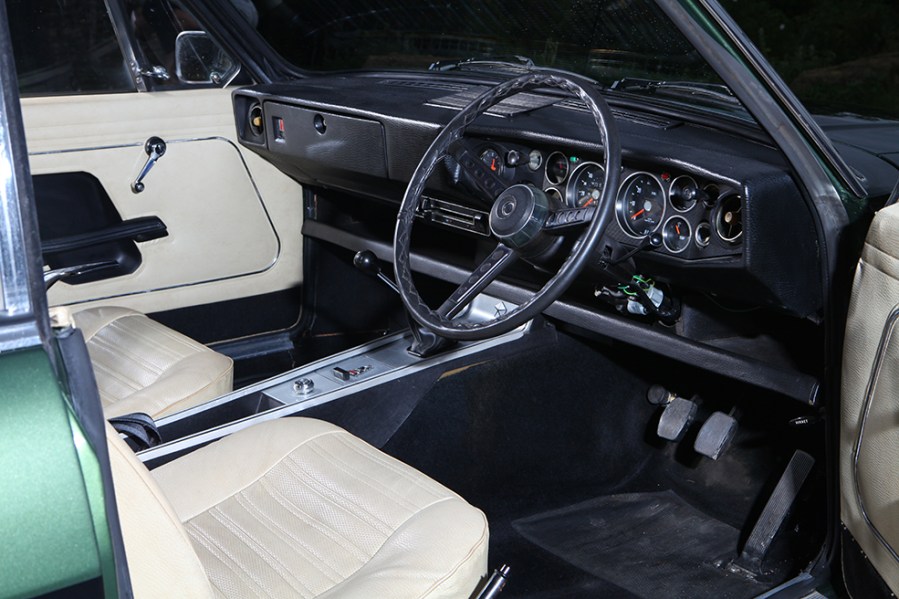
Rootes Arrow: our verdict
Fewer than 650,000 versions of all types were sold, as most models were more expensive than rivals to buy new, and rust killed many of them. But it’s worth searching, because the Arrow is a practical, reliable and affordable British classic that warrants further investigation. Better built than their Ford and Vauxhall contemporaries, with cheap and plentiful spares supply plus easy maintenance, these cars make appealing classic buys.
As you’d expect from such a vast array of models, owners’ clubs are plentiful, with the Hillman Owners’ Club, Post Vintage Humber Car Club and Sunbeam Rapier Owners’ Club all valuable sources for advice, as is the Rootes Archive Trust charity.
Rootes Arrow timeline
1966
Launch of Hillman Hunter and Singer New Vogue.
1967
Launch of Hillman Minx and Singer Gazelle VII saloons and estates, Sceptre MK III and
Sunbeam Rapier fastback coupe
1968
Sunbeam Rapier H120 introduced with 105bhp Holbay Engineering-tuned engine, Rostyle rims, polished sill covers, and rear spoiler. Hillman Hunter wins the London-Sydney Marathon event.

1969
Sunbeam Alpine arrives with single carburettor engine. 79bhp Hillman GT announced.
1970
Singer Gazelle VII and Hillman Minx production ceases. Hillman GT becomes Hunter GT.
1972
All-plastic dashboard introduced along with a new steering wheel, reshaped headlamps, and a new grille. Hillman Hunter GLS introduced with the same engine as the Sunbeam Rapier H120.
1974
Humber Sceptre Mk III estate arrives. Enlarged bumpers with full-width anodised aluminium rear trim added for 1975.
1975
Sunbeam Alpine Fastback discontinued, Sunbeam Rapier and Hunter GT also later discontinued.
1976
Ranged reduced to just Hillman Hunter Deluxe or Super.
1977
Hillman Hunter rebadged as the Chrysler Hunter.
1979
Chrysler Hunter production ceases.
2005
Iranian production of the Hunter-based Iran Khodro Paykan ceases after an unbroken almost 40-year run.

